Yu Hong: Fantasy and Reality
Long March Space will present Yu Hong in the online viewing room from 12 pm 16th September to 12 pm 30th September CST, 2020. The online viewing room will focus mainly on 8 of her works, exploring Yu Hong’s thinking and observation of the society and the world in different life stages as a female artist. Yu Hong utilizes parallel constructs to emotionally blend together macro- and microscopic points of view, yet still ultimately focusing on the same circumstances of being an individual within a larger group, affirming that the encounters between humans will continue to sustain Yu Hong’s creation as an artist and remain her focus.
Installation view: “Yu Hong: Concurrent Realms”, 2015, Suzhou Museum, Suzhou, China
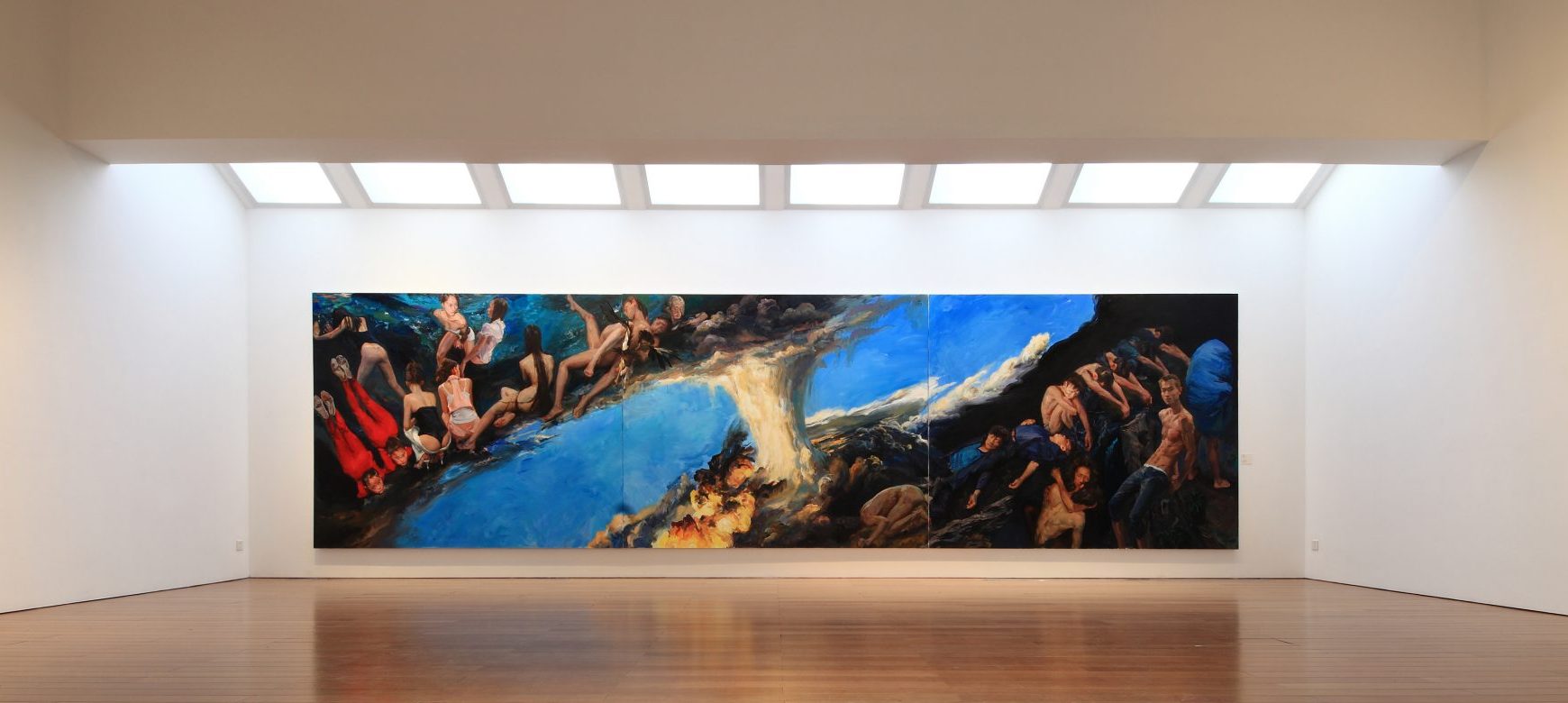
It is only when we can articulate the difference that lies between the narrative that the paintings construct by themselves in contrast with the narrative they construct in relation to the photographs that we can really begin to grasp the universality of human experience that the paintings convey.——Nicole Hess "The Narration and Interpretation of Yu Hong’s Works",Witness to Growth
The Awaken Consciousness of Gender —— Yu Hong: "She" Series
After the "Witness to Growth" series which started in 2002, Yu Hong began another series around a different theme in 2003 — "She".
In the "She" series Yu Hong brings attention to the situation facing women, revealing the lives of women from all walks of life in China today. Women of different identities, social circumstances, and intellectual backgrounds are the object of her work, and through the method of portraiture, she takes a focused view of their authentic spiritual state and existence, gaining an impression of their way of life and its traces. The characters in "She" exist in worlds created from their own lives. The wider world, era, and events are reflected through their individual lives, respecting the meaning of their lives and the insights they gain through daily experience, even in the most humble context. ——Xia Kejun, Yu Hong's "She" Series: the Labyrinth of Images and the Reality of Individuals
Yu Hong believes that a close comparison of photos and drawings enables people and society, history, and presence with multi-views in addition to time element makes it possible for people to run away from current life. these works undoubtedly are strongly conceptual, while these concepts are not empty with no reason but with so much touchable and tasty factors, and with time flows more will comes out from these works. In the images of each photograph, they fully unfold the spiritual pursuits and desires of an ideal world. Things reveal themselves from here, people's expressions in the images virtual and idealized, different everyday life. Yu Hong juxtaposes these two types of realistic images and paintings into a single vision, in order to firmly state the visual existence of the featured "she".——Xing Jie, Another Look of Yu Hong; interview, Zhai Yongming and Yu Hong, 2006
The Observation of Self-Awareness ——Yu Hong: "Portrait" Series
Curator Jerome Sans once described Yu Hong's work in this way, by using family and friends as models, and appropriating additional faces and body gestures from the Internet, the artist paints expressive life-size figures, inspiring a visceral connection in the viewer.
In the making process of the "Portrait' series", Yu Hong had profound conversations with her friends as well as models in her work. She also edited the videos of interviews into a documentary called 'Ten friends’, generating conversations between Yu Hong and the interviewer, the audience, and the figure in the painting. An epitome of the era and society is developed and presented by this form of conversation 'between person and person'.—— Interview "Jiangmei- Yu Hong", 2007
In "A Sky of Oneself", Yu Hong once again painted the famous Chinese musician, music producer Zhang Yadong, expressing his struggle and persistence in music, not giving up pursuing his dream and a real understanding of the new era and keeping the dream and faith of his own under the sky of music.
《Ten Friends》Documentary excerpt of Zhang Yadong
Stella Zhang was born in Beijing, China. After graduating from the Central Academy of Fine Arts with a bachelor’s degree in Chinese painting, she took up further studies at Tama Art University and Tokyo University of the Arts in Japan. Afterward, her family settled in the United States since 2003. The artistic practice of Stella Zhang is accompanied by the twists in her personal experience. The experience of studying and living in China, Japan, and America put her under different cultural environments and circumstances. Her mind has undergone continuous ideological fission, which is reflected in her artworks in recent years.
《Ten Friends》Documentary excerpt of Stella Zhang
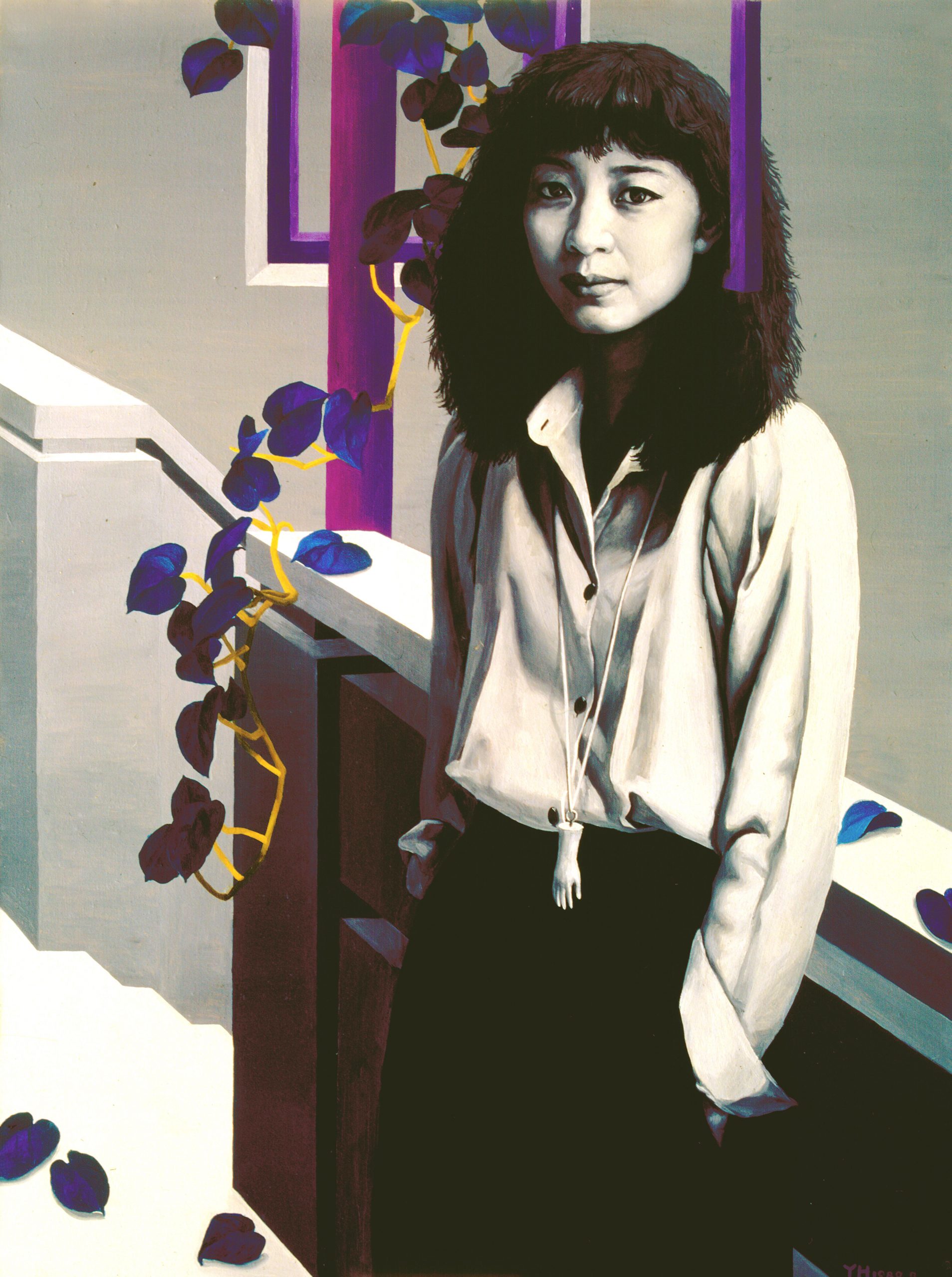
Yu Hong, Gray Portrait, 1989, Oil on Canvas, Collection of Long Museum
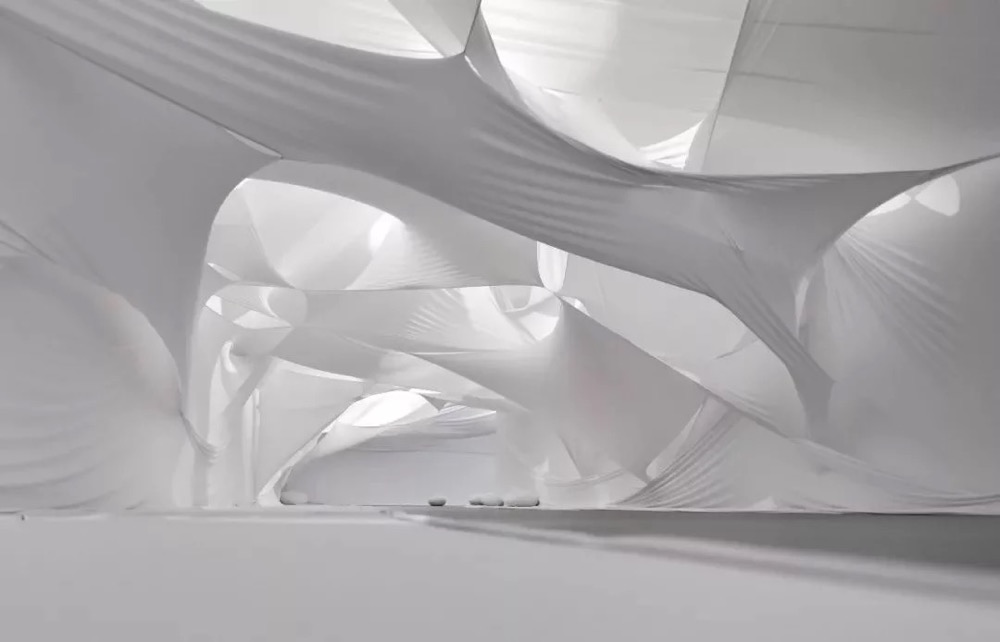
Stella Zhang, More Than One and Half Tons, 2014, Resin, cloth, iron
With the accumulation of life experience and maturity of age, the artist produced the "0-Viewpoint" series in 2010. This most important theme creation, which has continued to this day, focuses on the body and the inner psychological changes, with priority to an emotional and psychological reflex related to the body. To some extent, "0-Viewpoint" is a psychological coordinate for Zhang to adjust her relationship with the outside world, and also an outlet of systematic expression of all her subconsciousness.
Zhang Xinjun works and lives in Beijing. He graduated from the oil painting department of Sichuan Fine Arts Institute in 2005, and then he completed his master's degree in the Central Academy of Fine Arts. In his artistic practice during this period, he remains uncertain about the distance between the painting and the body. He feels cramped by the coordinating ability of consciousness and experience. The physical consumption or labor experience of the body let him forget the dissociation of consciousness and move closer to the nature of 'move' and 'do'.
《Ten Friends》Documentary excerpt of Zhang Xinjun
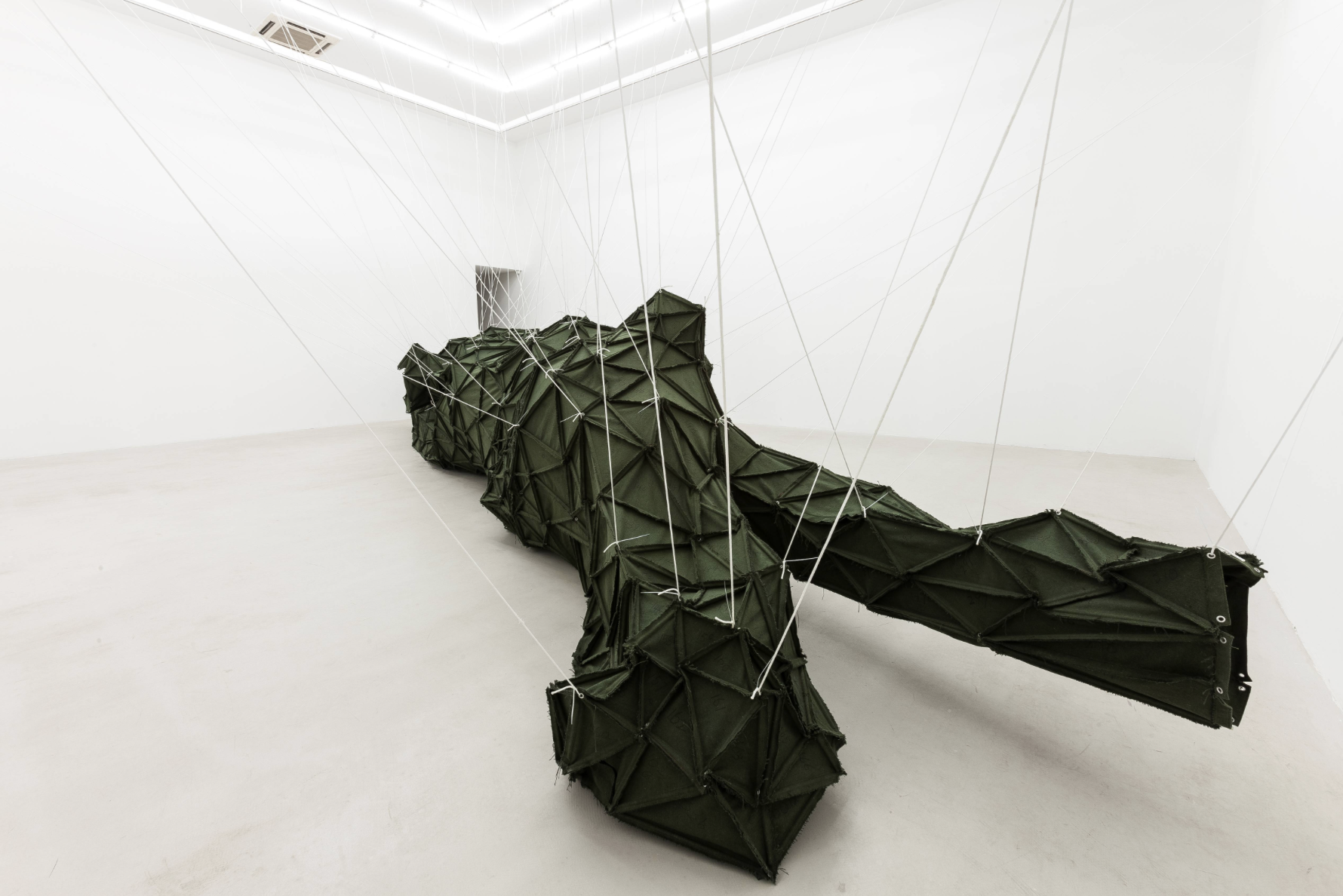
Zhang Xinjun, Green Hole, 2015, Canvas, metal
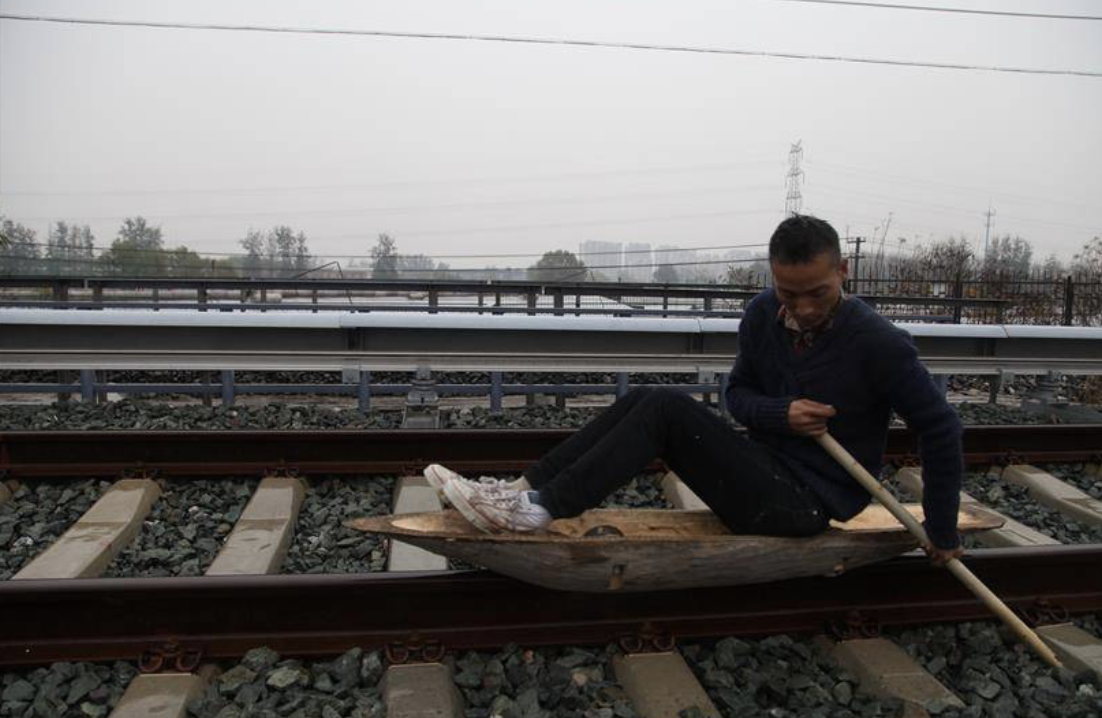
Zhang Xinjun, Boat, 2012, Performance
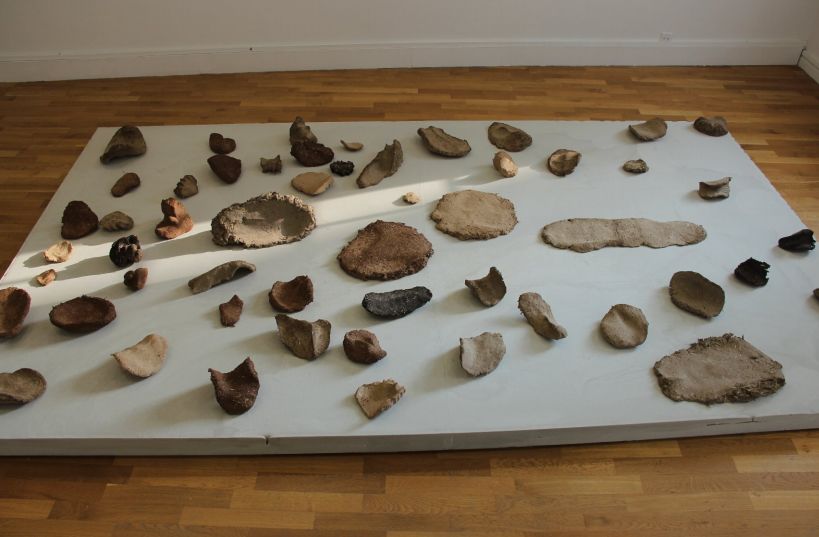
Zhang Xinjun, Mine, 2017, wood, screw, ink, clay, straw
In the new work 'Green Hole' by Zhang Xinjun, he used the geometrical method to enlarge the objects or spaces that he obtained occasionally according to a certain proportion. The work is supported slowly by using the rope to pull, becoming another object or space.
The work 'Boat' happened on a circular railway. From a part of the railway that can be accessible by climbing over the fence in Hei Qiao, he slid in a wood boat by using two quants. There was a train running on another railway in the opposite direction of the boat's moving direction. The performance lasted for two hours and ended up at the intersect of railway and street.
The work 'Mine' consists of clay and coal. Clay or 'body clay' work was the artist used his body to suppress the clay and mode it into a negative space between limbs, creating a tureen dimensional mark, such as armpit or gaps between his fingers when his hands were grasping each other. This method shows his performing nomadic observation of life, body, and environment.
The Ambiguity of Fantasy and Reality—— "White Horse" "At the Edges of the City"
"Yu Hong's paintings are a kind of history painting, but they do not follow the rule of universal historical time. Instead, they visualize a predicament of multiple universes, each real, but none universal. Realism co-exists with improbable scenes and impossible physics. We see people and places and mountains and fires and clouds, but none of them behave according to our knowledge of how the world is supposed to work."—— Alexandra Munroe, The Time of History and the Time of Divinity
The Thousands Appearances of Saha World ——"Earth and Heaven"
"Earth and Heaven" was created in 2014, it was conversely an attempt by the artist to combine a spatial concept with the landscapes of daily life, using a more theatrical method of expressing the uncertainties with which life is filled, floated into a world of fantastic fables and reality, it can be seen as a turning point in Yu Hong's painting career, in which the artist's uniquely majestic imagination along with various disparate nations, regions, and cultures are ultimately combined together to form a single entity. In many aspects, it is in fact a linking together of influences and structural points, and Yu Hong utilizes parallel constructs to emotionally blend together macro- and microscopic points of view, yet still ultimately focusing on the same circumstances of being an individual within a larger group, affirming that the encounters between humans will continue to sustain Yu Hong's creation as an artist and remain her focus.
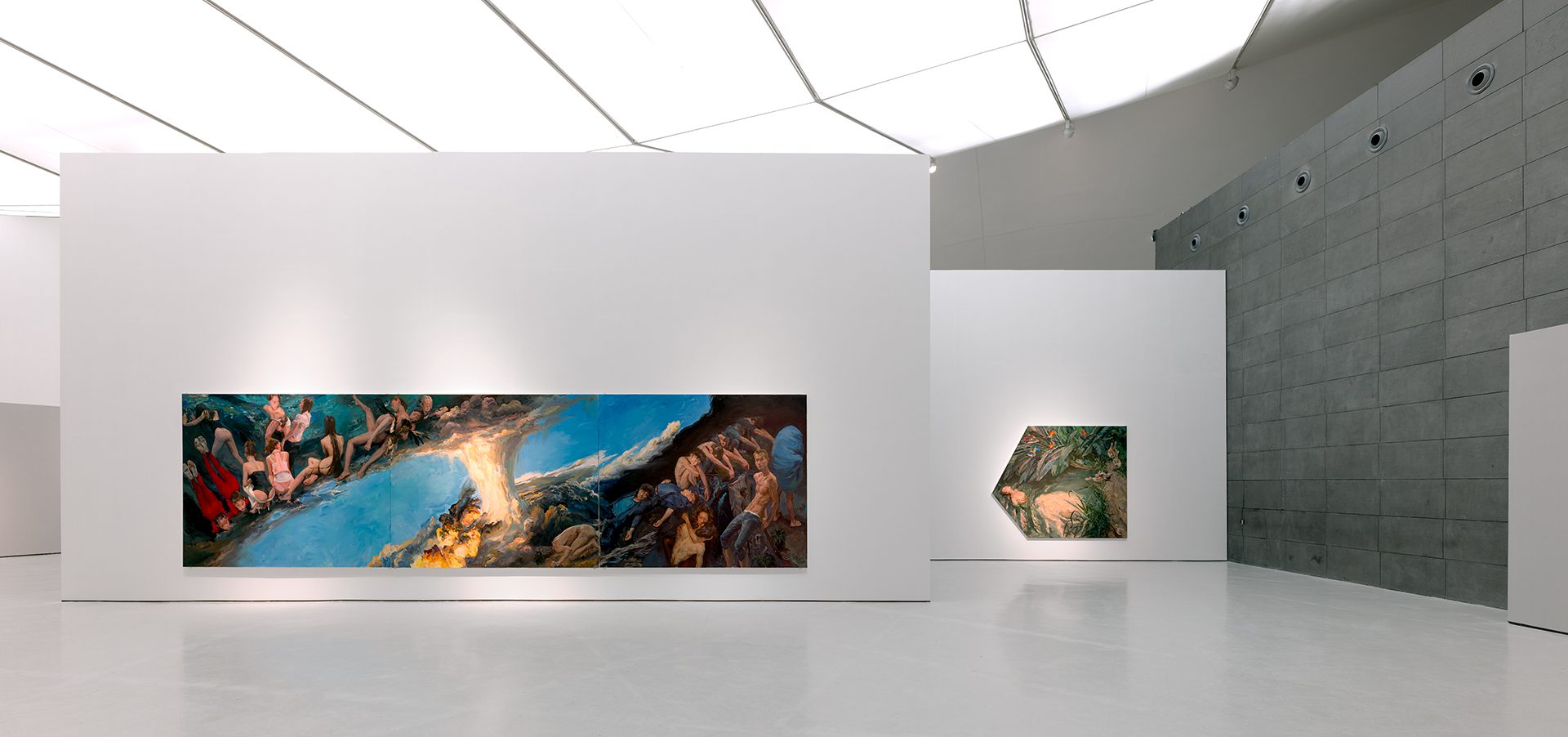
Installation view: “Yu Hong: Garden of Dreams”, CAFA Annual Fine Arts Nomination Exhibition 2016, Beijing, China
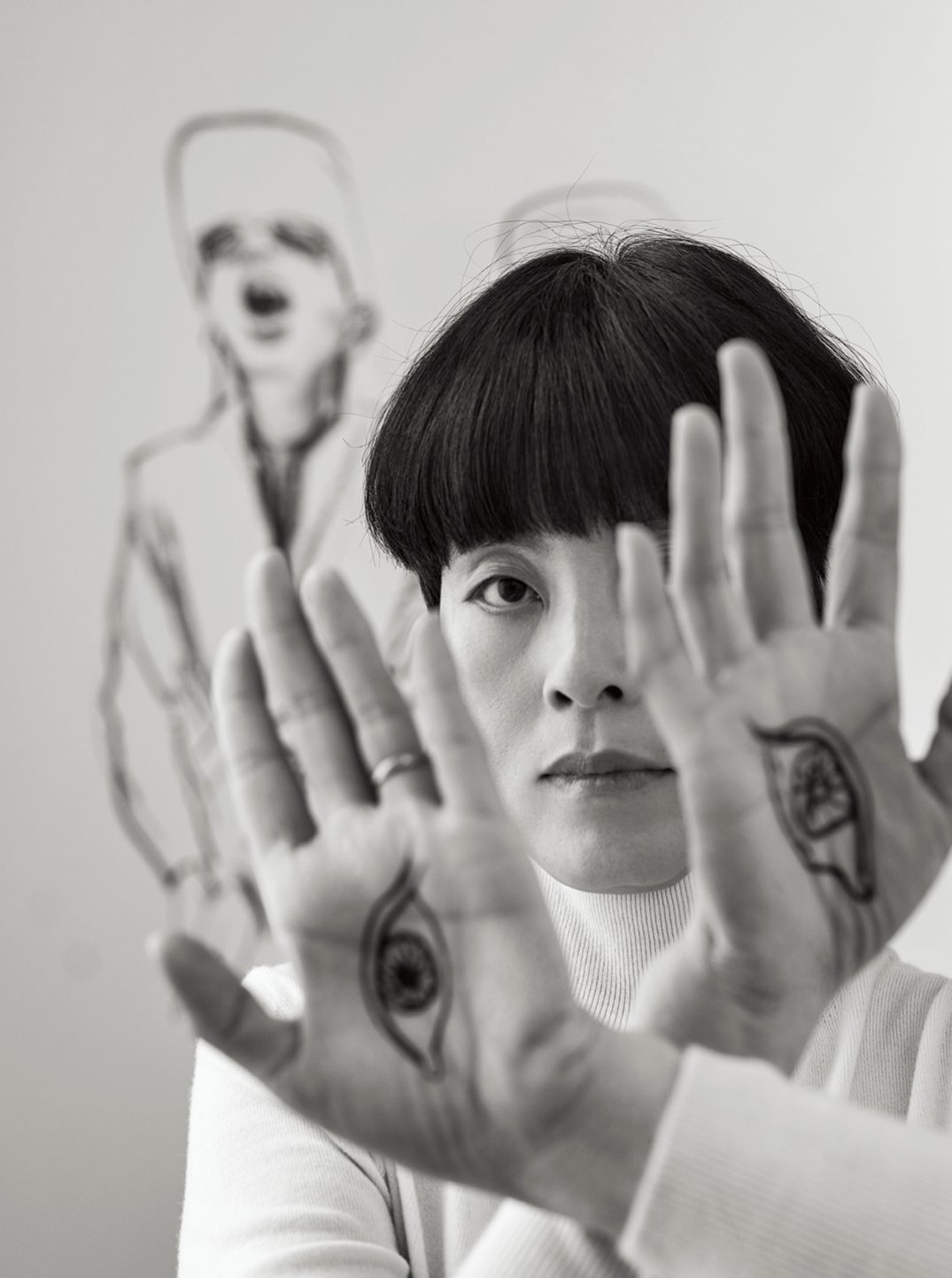
Image courtesy of ELLE China 2019 June, photo by Xu Xiaowei
Yu Hong was born in 1966 in Xi'an, China. In the 1980s she studied oil painting at the Central Academy of Fine Arts (CAFA) in Beijing and graduated with a post-graduate degree from the oil painting department in 1996. Since 1988 she has been a teacher in CAFA's oil painting department. From the start, Yu Hong received training in realist painting, which over time would translate into her own individual aesthetic language. The core subject of Yu Hong's paintings has always been human nature, and how human beings grow and exist in this society, in this world. Those figures, painted down by her brush express the feelings and self-analysis of people thrown into the reality of society.
Yu Hong: Fantasy and Reality
Long March Space will present Yu Hong in the online viewing room from 12 pm 16th September to 12 pm 30th September CST, 2020. The online viewing room will focus mainly on 8 of her works, exploring Yu Hong’s thinking and observation of the society and the world in different life stages as a female artist. Yu Hong utilizes parallel constructs to emotionally blend together macro- and microscopic points of view, yet still ultimately focusing on the same circumstances of being an individual within a larger group, affirming that the encounters between humans will continue to sustain Yu Hong’s creation as an artist and remain her focus.

Installation view: “Yu Hong: Concurrent Realms”, 2015, Suzhou Museum, Suzhou, China
It is only when we can articulate the difference that lies between the narrative that the paintings construct by themselves in contrast with the narrative they construct in relation to the photographs that we can really begin to grasp the universality of human experience that the paintings convey.——Nicole Hess "The Narration and Interpretation of Yu Hong’s Works",Witness to Growth
The Awaken Consciousness of Gender— Yu Hong: "She" Series
After the "Witness to Growth" series which started in 2002, Yu Hong began another series around a different theme in 2003 — "She".
In the "She" series Yu Hong brings attention to the situation facing women, revealing the lives of women from all walks of life in China today. Women of different identities, social circumstances, and intellectual backgrounds are the object of her work, and through the method of portraiture, she takes a focused view of their authentic spiritual state and existence, gaining an impression of their way of life and its traces. The characters in "She" exist in worlds created from their own lives. The wider world, era, and events are reflected through their individual lives, respecting the meaning of their lives and the insights they gain through daily experience, even in the most humble context. ——Xia Kejun, Yu Hong's "She" Series: the Labyrinth of Images and the Reality of Individuals
Yu Hong believes that a close comparison of photos and drawings enables people and society, history, and presence with multi-views in addition to time element makes it possible for people to run away from current life. these works undoubtedly are strongly conceptual, while these concepts are not empty with no reason but with so much touchable and tasty factors, and with time flows more will comes out from these works. In the images of each photograph, they fully unfold the spiritual pursuits and desires of an ideal world. Things reveal themselves from here, people's expressions in the images virtual and idealized, different everyday life. Yu Hong juxtaposes these two types of realistic images and paintings into a single vision, in order to firmly state the visual existence of the featured "she".——Xing Jie, Another Look of Yu Hong; interview, Zhai Yongming and Yu Hong, 2006
The Observation of Self-Awareness— Yu Hong: "Portrait" Series
Curator Jerome Sans once described Yu Hong's work in this way, by using family and friends as models, and appropriating additional faces and body gestures from the Internet, the artist paints expressive life-size figures, inspiring a visceral connection in the viewer.
In the making process of the "Portrait' series", Yu Hong had profound conversations with her friends as well as models in her work. She also edited the videos of interviews into a documentary called 'Ten friends’, generating conversations between Yu Hong and the interviewer, the audience, and the figure in the painting. An epitome of the era and society is developed and presented by this form of conversation 'between person and person'.—— Interview "Jiangmei- Yu Hong", 2007
In "A Sky of Oneself", Yu Hong once again painted the famous Chinese musician, music producer Zhang Yadong, expressing his struggle and persistence in music, not giving up pursuing his dream and a real understanding of the new era and keeping the dream and faith of his own under the sky of music.
《Ten Friends》Documentary excerpt of Zhang Yadong
Stella Zhang was born in Beijing, China. After graduating from the Central Academy of Fine Arts with a bachelor’s degree in Chinese painting, she took up further studies at Tama Art University and Tokyo University of the Arts in Japan. Afterward, her family settled in the United States since 2003. The artistic practice of Stella Zhang is accompanied by the twists in her personal experience. The experience of studying and living in China, Japan, and America put her under different cultural environments and circumstances. Her mind has undergone continuous ideological fission, which is reflected in her artworks in recent years.
《Ten Friends》Documentary excerpt of Stella Zhang

Yu Hong, Gray Portrait, 1989, Oil on Canvas, Collection of Long Museum
With the accumulation of life experience and maturity of age, the artist produced the "0-Viewpoint" series in 2010. This most important theme creation, which has continued to this day, focuses on the body and the inner psychological changes, with priority to an emotional and psychological reflex related to the body. To some extent, "0-Viewpoint" is a psychological coordinate for Zhang to adjust her relationship with the outside world, and also an outlet of systematic expression of all her subconsciousness.

Stella Zhang, More Than One and Half Tons, 2014, Resin, cloth, iron
Zhang Xinjun works and lives in Beijing. He graduated from the oil painting department of Sichuan Fine Arts Institute in 2005, and then he completed his master's degree in the Central Academy of Fine Arts. In his artistic practice during this period, he remains uncertain about the distance between the painting and the body. He feels cramped by the coordinating ability of consciousness and experience. The physical consumption or labor experience of the body let him forget the dissociation of consciousness and move closer to the nature of 'move' and 'do'.
《Ten Friends》Documentary excerpt of Zhang Xinjun

Zhang Xinjun, Green Hole, 2015, Canvas, metal
In the new work 'Green Hole' by Zhang Xinjun, he used the geometrical method to enlarge the objects or spaces that he obtained occasionally according to a certain proportion. The work is supported slowly by using the rope to pull, becoming another object or space.

Zhang Xinjun, Boat, 2012, Performance
The work 'Boat' happened on a circular railway. From a part of the railway that can be accessible by climbing over the fence in Hei Qiao, he slid in a wood boat by using two quants. There was a train running on another railway in the opposite direction of the boat's moving direction. The performance lasted for two hours and ended up at the intersect of railway and street.

Zhang Xinjun, Mine, 2017, wood, screw, ink, clay, straw
The work 'Mine' consists of clay and coal. Clay or 'body clay' work was the artist used his body to suppress the clay and mode it into a negative space between limbs, creating a tureen dimensional mark, such as armpit or gaps between his fingers when his hands were grasping each other. This method shows his performing nomadic observation of life, body, and environment.
The Ambiguity of Fantasy and Reality ——"White Horse""At the Edges of the City"
"Yu Hong's paintings are a kind of history painting, but they do not follow the rule of universal historical time. Instead, they visualize a predicament of multiple universes, each real, but none universal. Realism co-exists with improbable scenes and impossible physics. We see people and places and mountains and fires and clouds, but none of them behave according to our knowledge of how the world is supposed to work."—— Alexandra Munroe, The Time of History and the Time of Divinity
In her new work, Yu Hong researched into the horse, a classic animal theme in the history of painting, in an attempt to establish the symbolic structure of traditional cultural symbols in her creation. In the painting, "Ferghana horse" corresponding "shape" and "color" in Yu Hong's works appeared at the same time, she kept the shape of the "horse", and "white" processing into a - kind of skin color characteristics, but there is no lack of metaphor for the artist's own inner image. "The precious horse" jumps to fly to the sky. The "horse" image is larger than the Huangshan mountain on the left side, that is different from the general picture structure processing and arrangement of mountains and rivers, reflecting people-oriented idea in the present social background under the background of socialist ownership. Whether social, self-centered, or philosophical theme, painting has always been Yu Hong's methodology for responding to and exploring the world around her.
One is always trying to escape the everyday reality, but if we are able to leave the material reality of life behind and we look down upon the earth from a cloud, we would continue to observe the same reality, that life is entangled with weariness and suspense, sexuality and violence, and loneliness. In the painting, these ideas mix with the smoke, lightning, and explosions to split the surroundings. The scene can be described as a rebirth of sorts. In a limitless universe without beginning or end, maybe rebirth and extinction are simply a puff of smoke. We feel a loss of order, loss of stability, indecision, and uncertainty. So many things co-exist at once, and we can't physically adjust to these changes. This is what Yu Hong expressed when she described her painting. But Yu Hong is not just illustrating the theatrics of temporal realities run amuck; she is charting her own anxious mental state about the future, a kind of dark "enchantment". ——Alexandra Munroe, The Time of History and the Time of Divinity
The Thousands Appearances of Saha World ——"Earth and Heaven"

Installation view: “Yu Hong: Garden of Dreams”, CAFA Annual Fine Arts Nomination Exhibition 2016, Beijing, China
"Earth and Heaven" was created in 2014, it was conversely an attempt by the artist to combine a spatial concept with the landscapes of daily life, using a more theatrical method of expressing the uncertainties with which life is filled, floated into a world of fantastic fables and reality, it can be seen as a turning point in Yu Hong's painting career, in which the artist's uniquely majestic imagination along with various disparate nations, regions, and cultures are ultimately combined together to form a single entity. In many aspects, it is in fact a linking together of influences and structural points, and Yu Hong utilizes parallel constructs to emotionally blend together macro- and microscopic points of view, yet still ultimately focusing on the same circumstances of being an individual within a larger group, affirming that the encounters between humans will continue to sustain Yu Hong's creation as an artist and remain her focus.
"The World of Saha" was proposed by Yu Hong in her solo exhibition at Long Museum West Bund in 2019. "The World of Saha", a Buddhist expression of great importance to Yu Hong's personal reflection, meaning the world to be endured‖, the world that is ours, and in which anyone who suffers is the prisoner of their own personal desires. According to traditional Indian cosmology, living beings endure all kinds of difficulties and suffering because of their acts in previous lives, which brought about their birth in this world. The World of Saha is also the world of human resilience as an act of resistance, an urge to live in spite of adversity, by surpassing the major wounds of life.
Her true subject is temporality, and how the present encapsulates the past and foreshadows the future. By appropriating history, she furthers her fundamental interest in creating a new temporality wherein historical time becomes synchronous with lived reality. Events are suspended between competing temporalities and spaces—ancient China, modern Europe, contemporary cities, and future calamities. She summons nature and historical facts, including the real people captured off random internet image streams, but then places them in a scene of chaos outside the bounds of history and of nature. This is not the grandness of revolutionary painting or religious painting, where triumph or transcendence is imminent; this is the grandness of contemporary disruption, where the dissolution of the social order is imminent. ——Alexandra Munroe, The Time of History and the Time of Divinity

Image courtesy of ELLE China 2019 June, photo by Xu Xiaowei
Yu Hong was born in 1966 in Xi'an, China. In the 1980s she studied oil painting at the Central Academy of Fine Arts (CAFA) in Beijing and graduated with a post-graduate degree from the oil painting department in 1996. Since 1988 she has been a teacher in CAFA's oil painting department. From the start, Yu Hong received training in realist painting, which over time would translate into her own individual aesthetic language. The core subject of Yu Hong's paintings has always been human nature, and how human beings grow and exist in this society, in this world. Those figures, painted down by her brush express the feelings and self-analysis of people thrown into the reality of society.

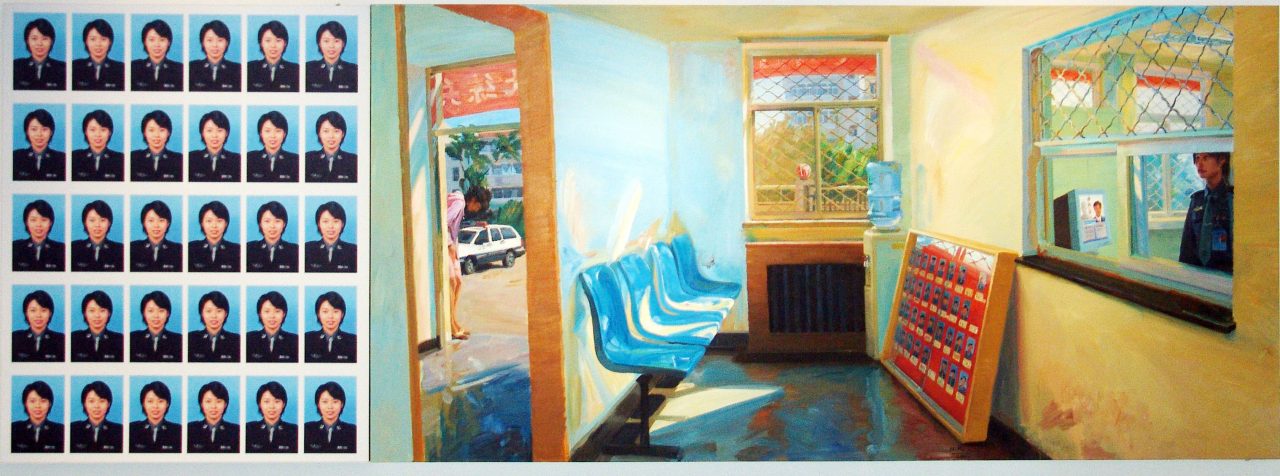
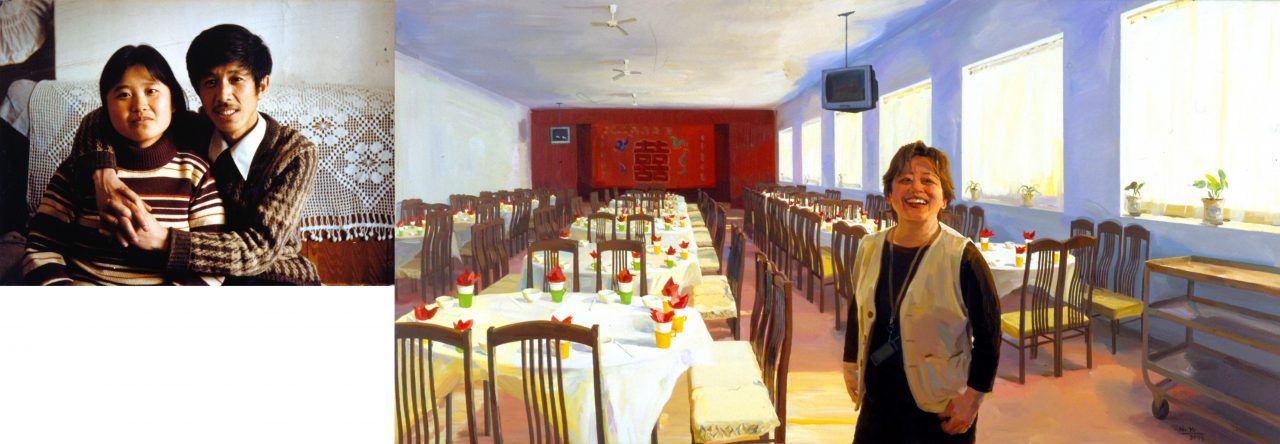
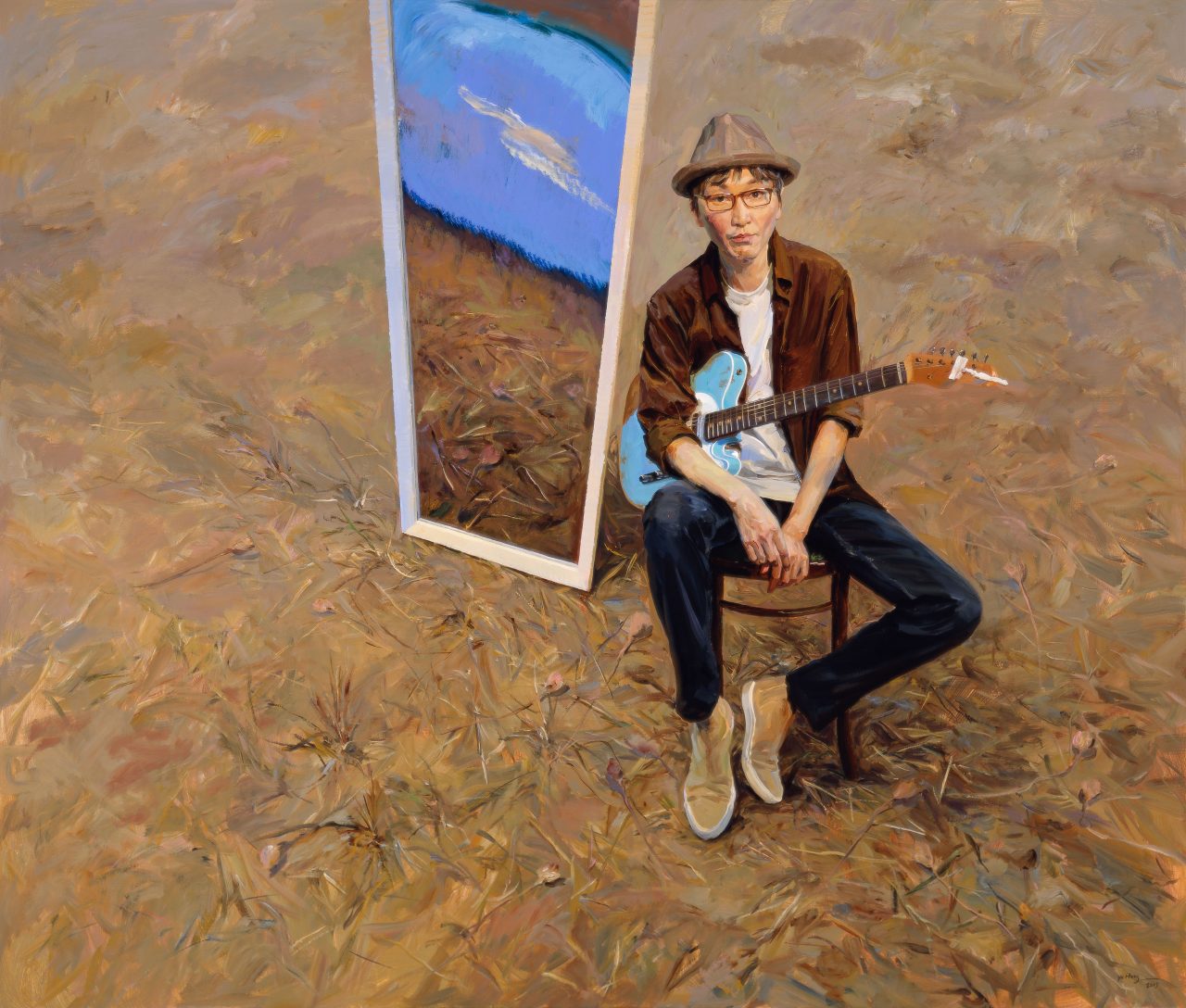
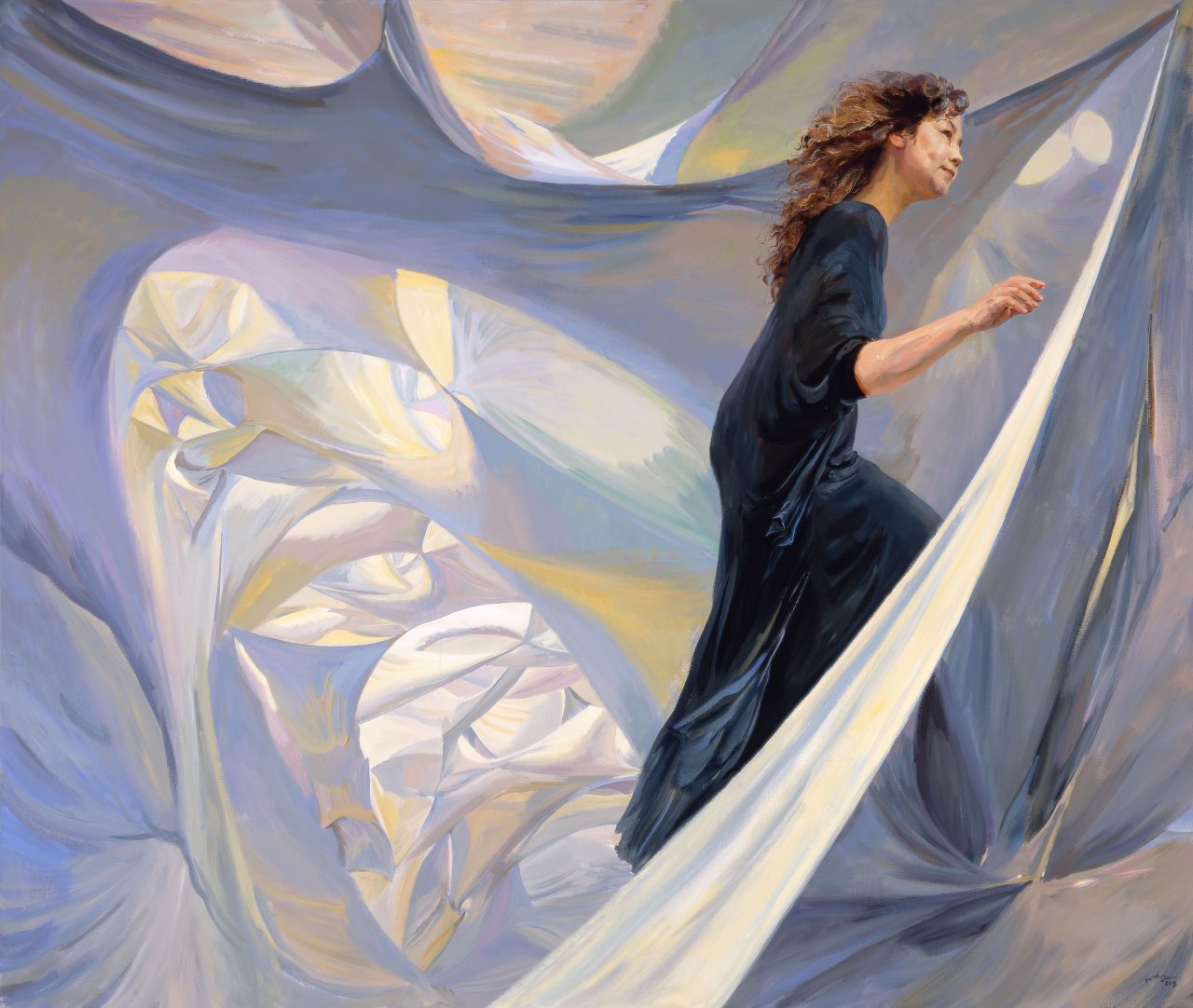
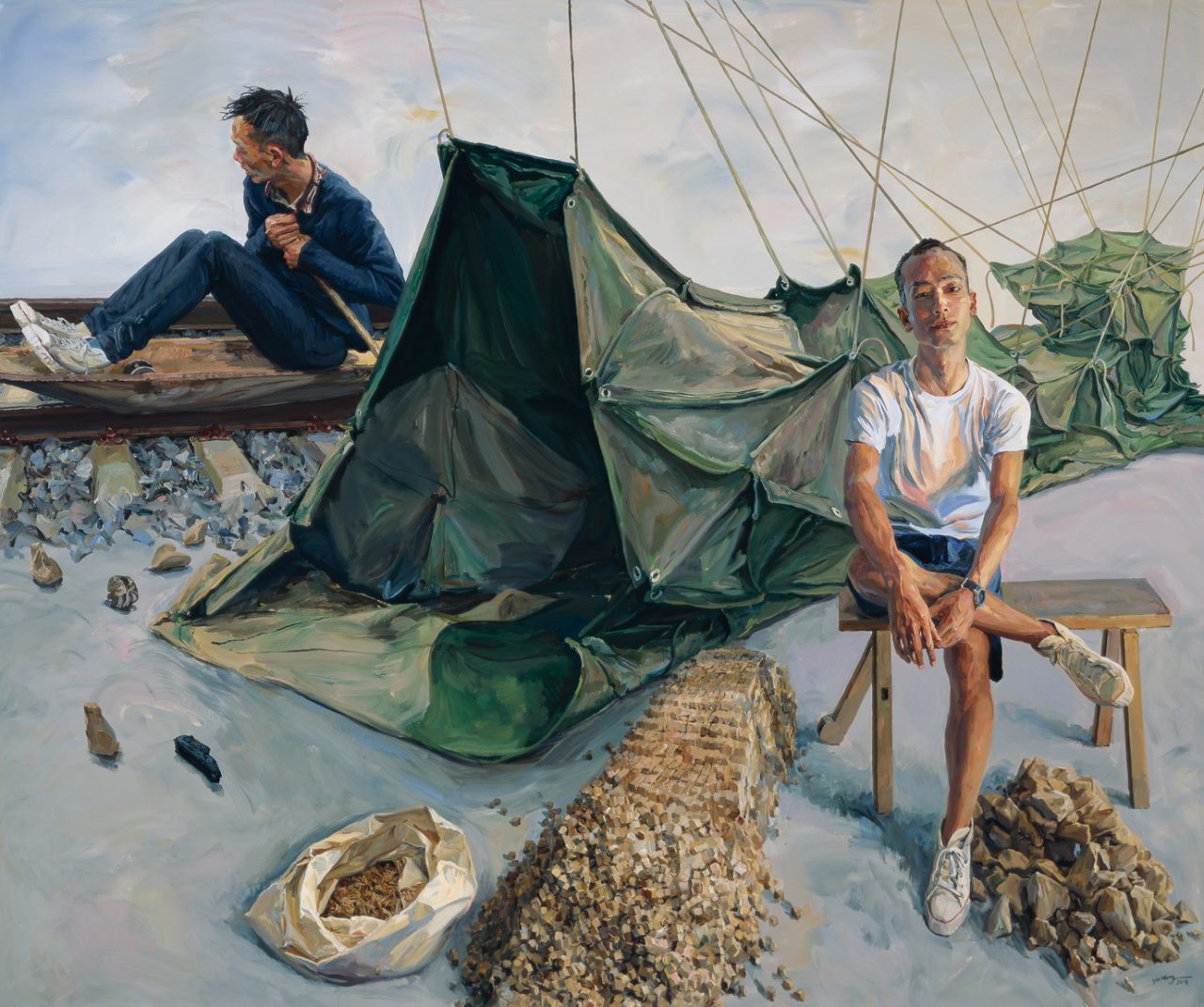
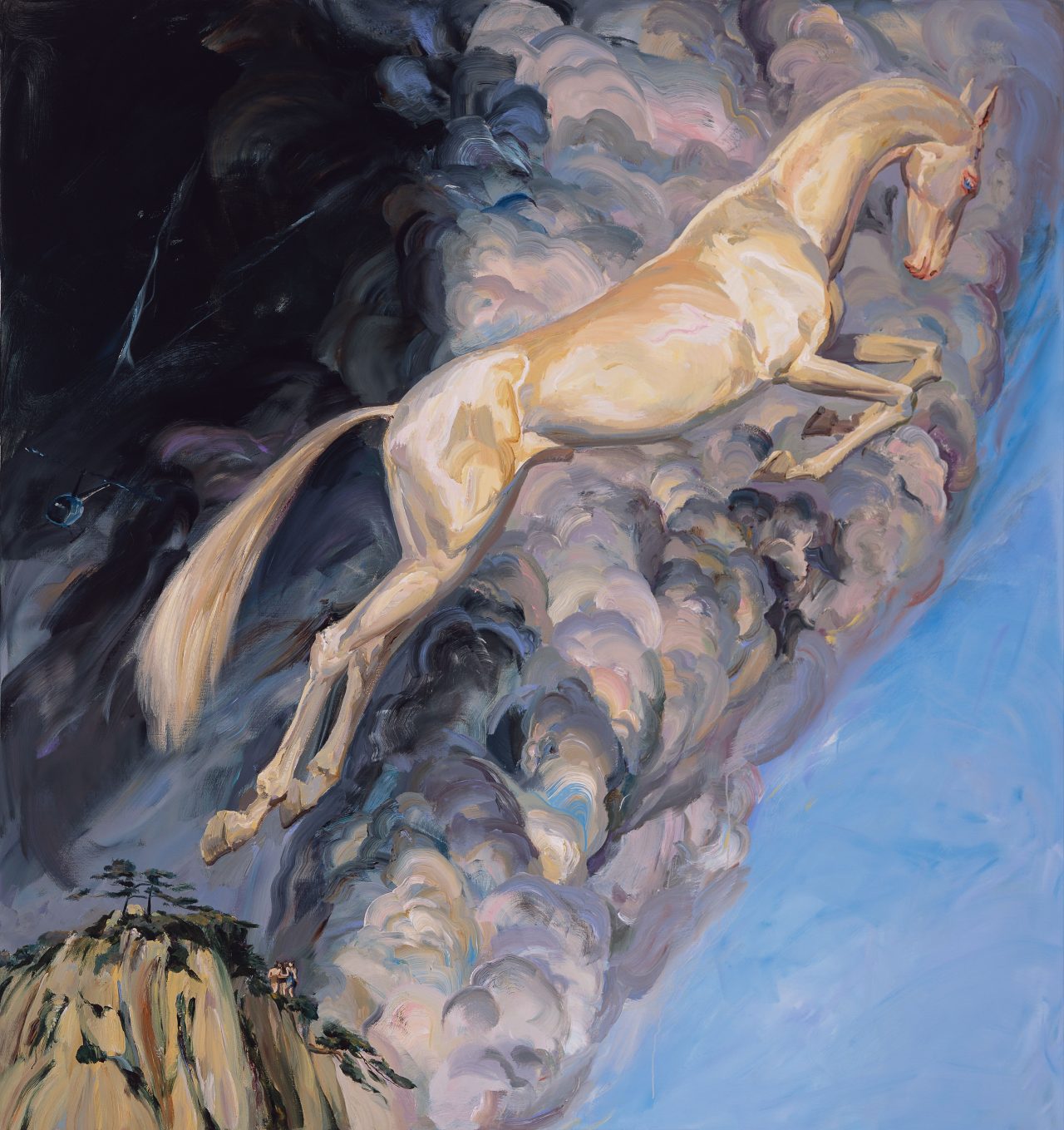
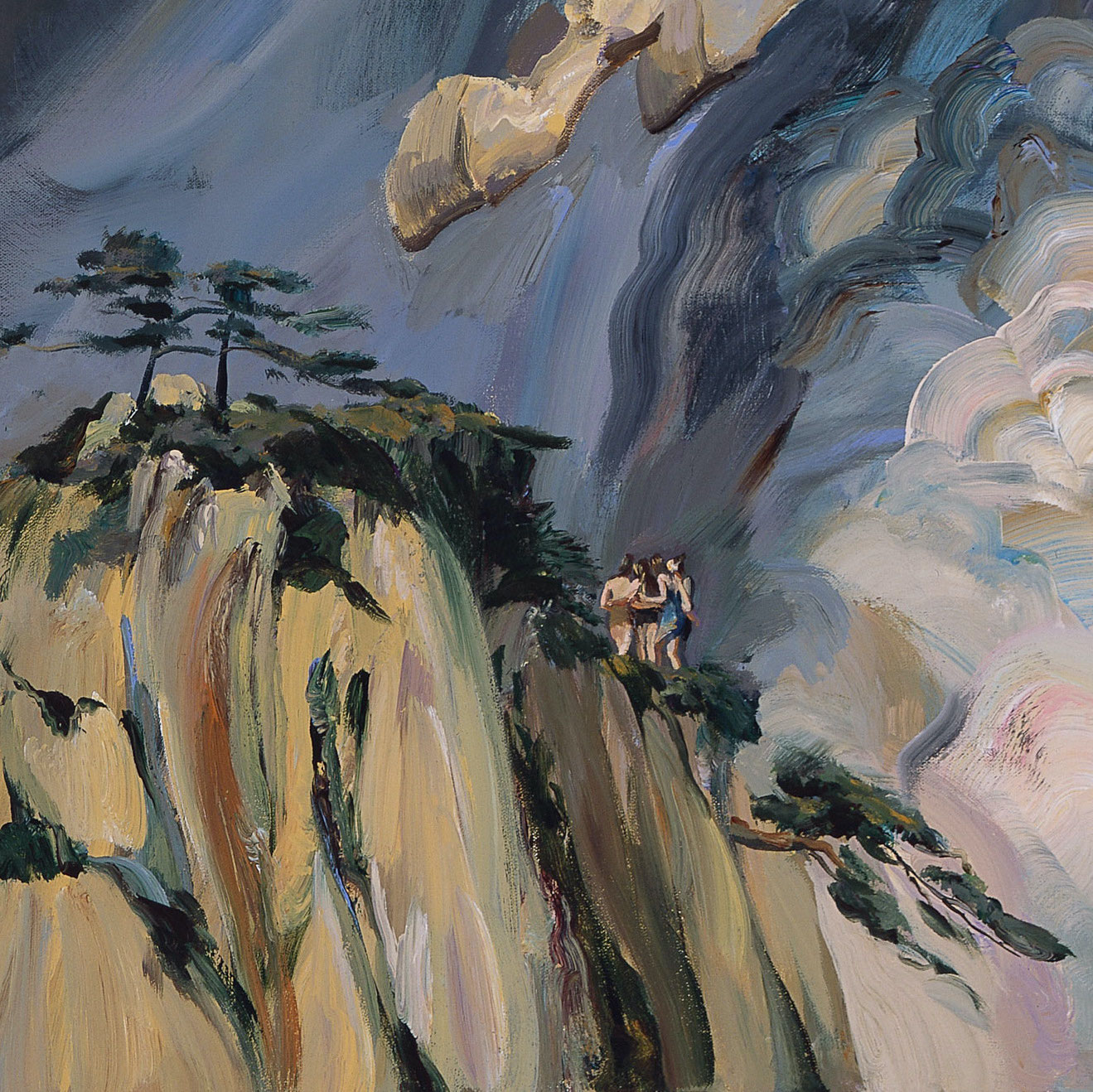
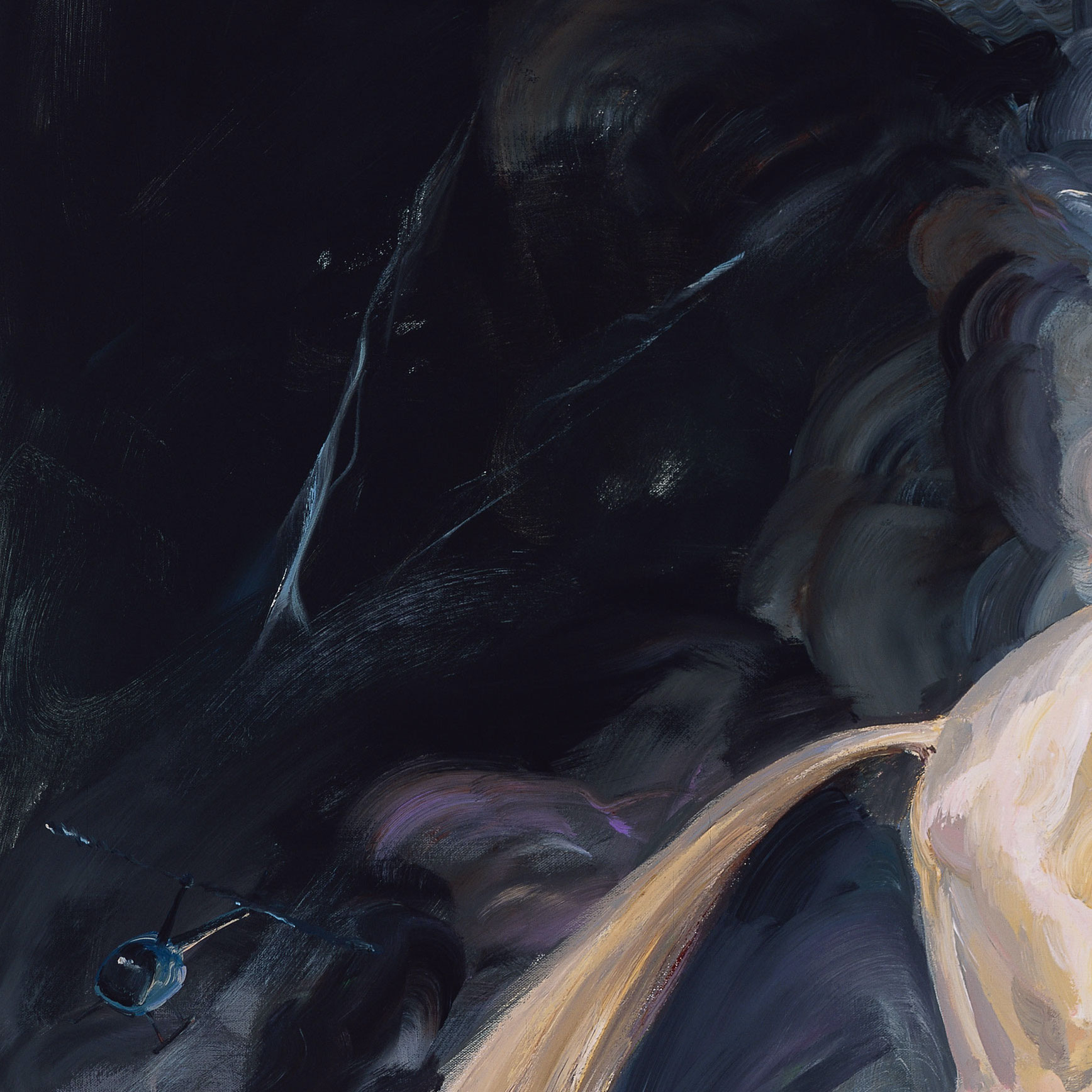
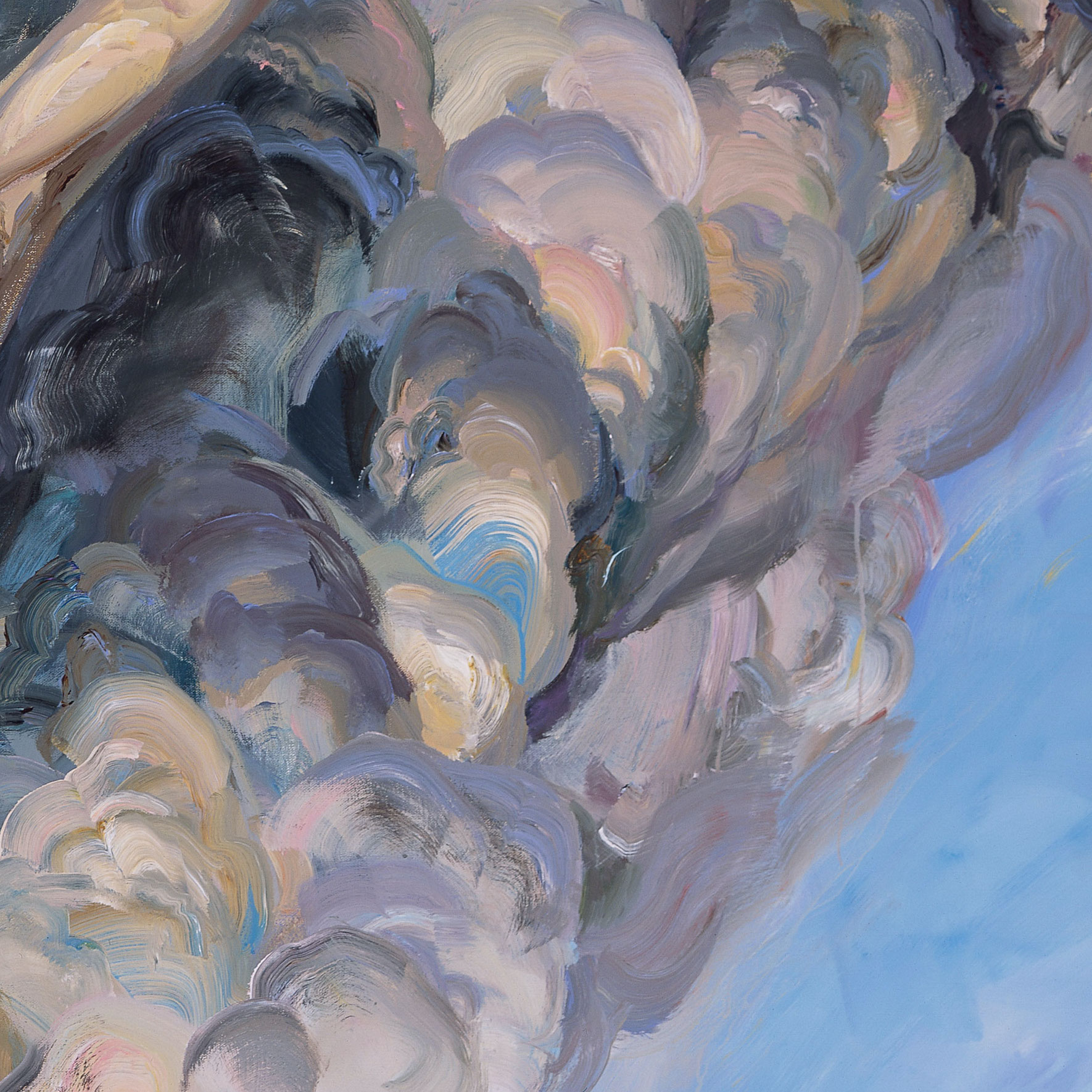
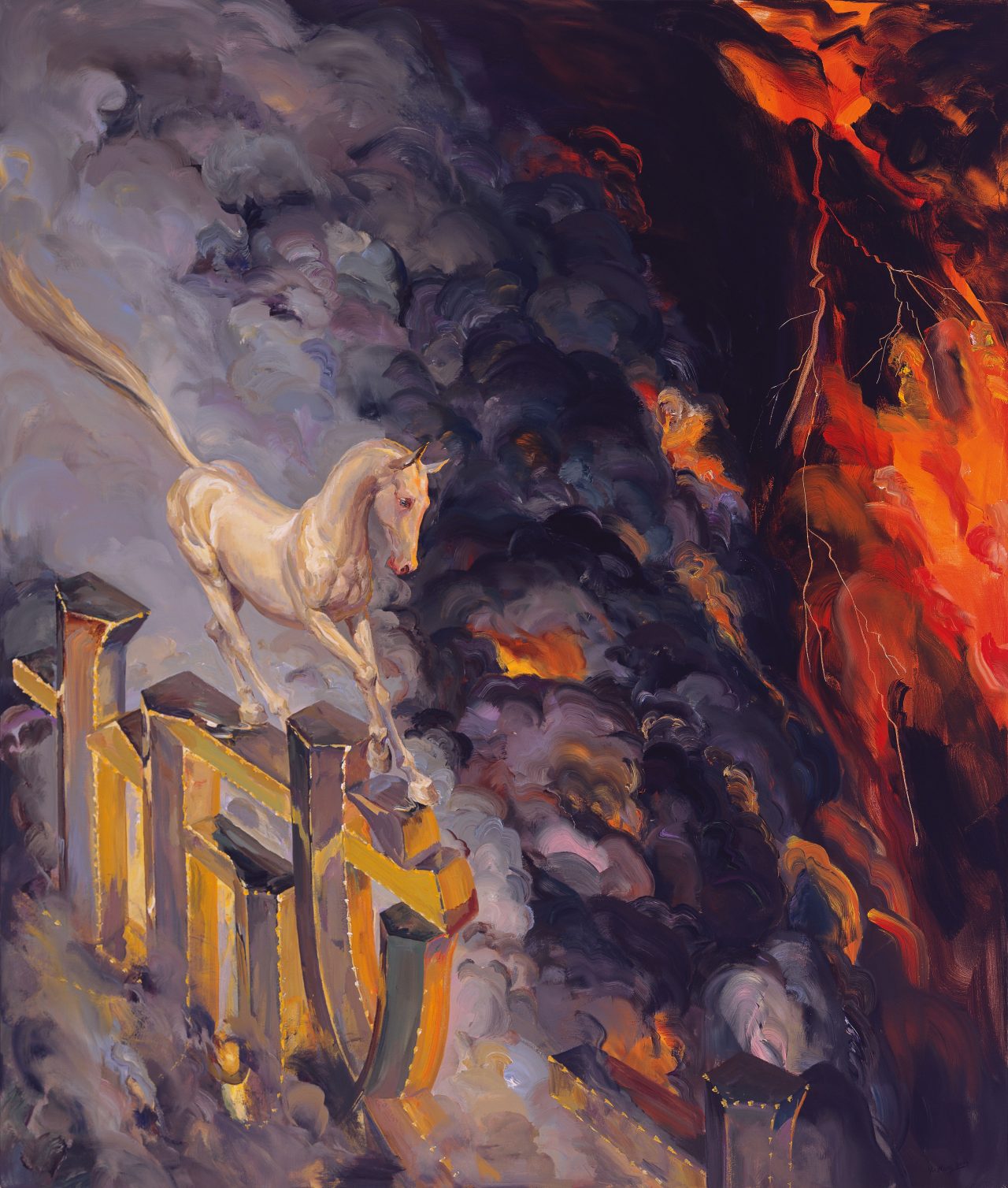
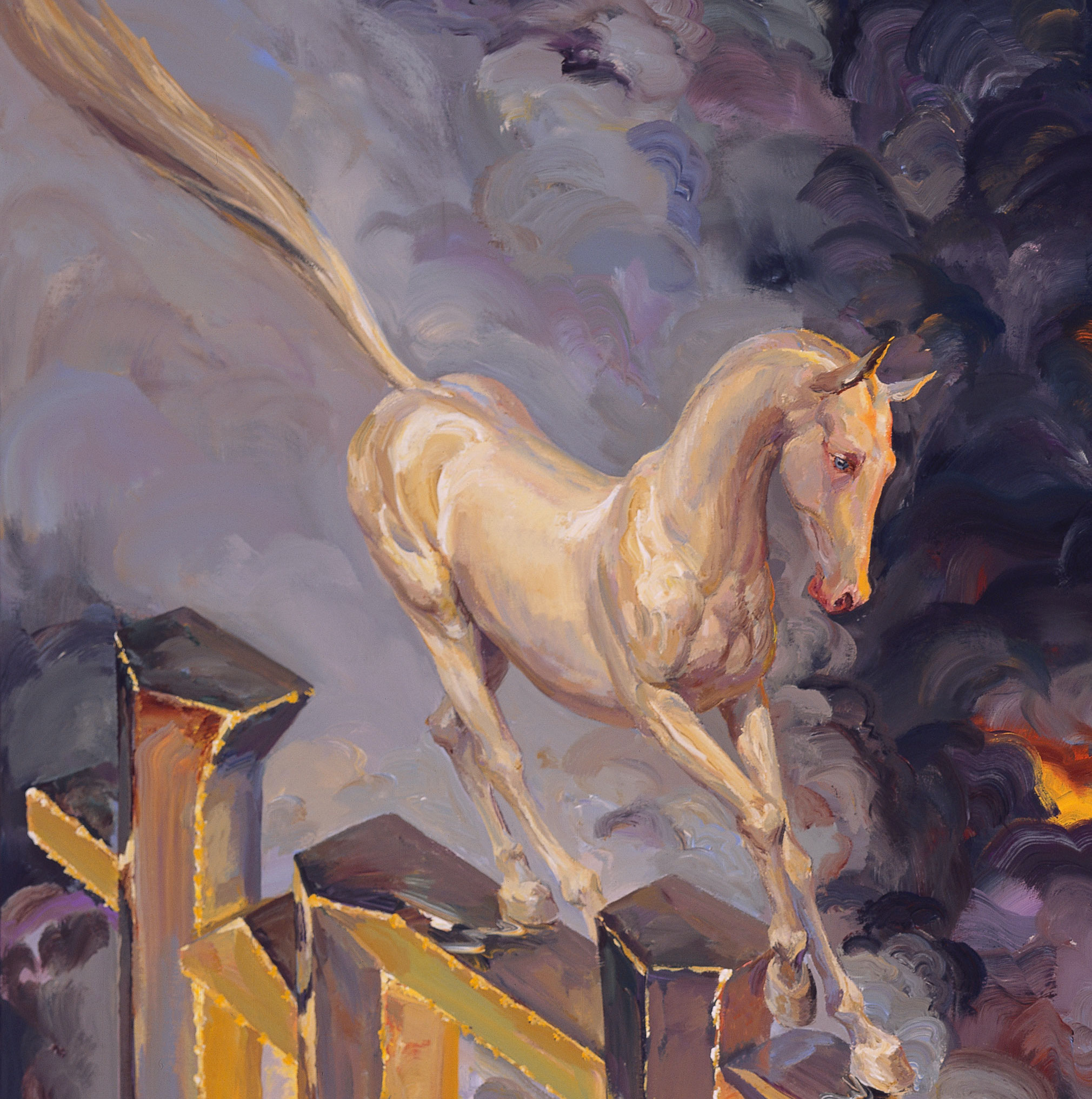
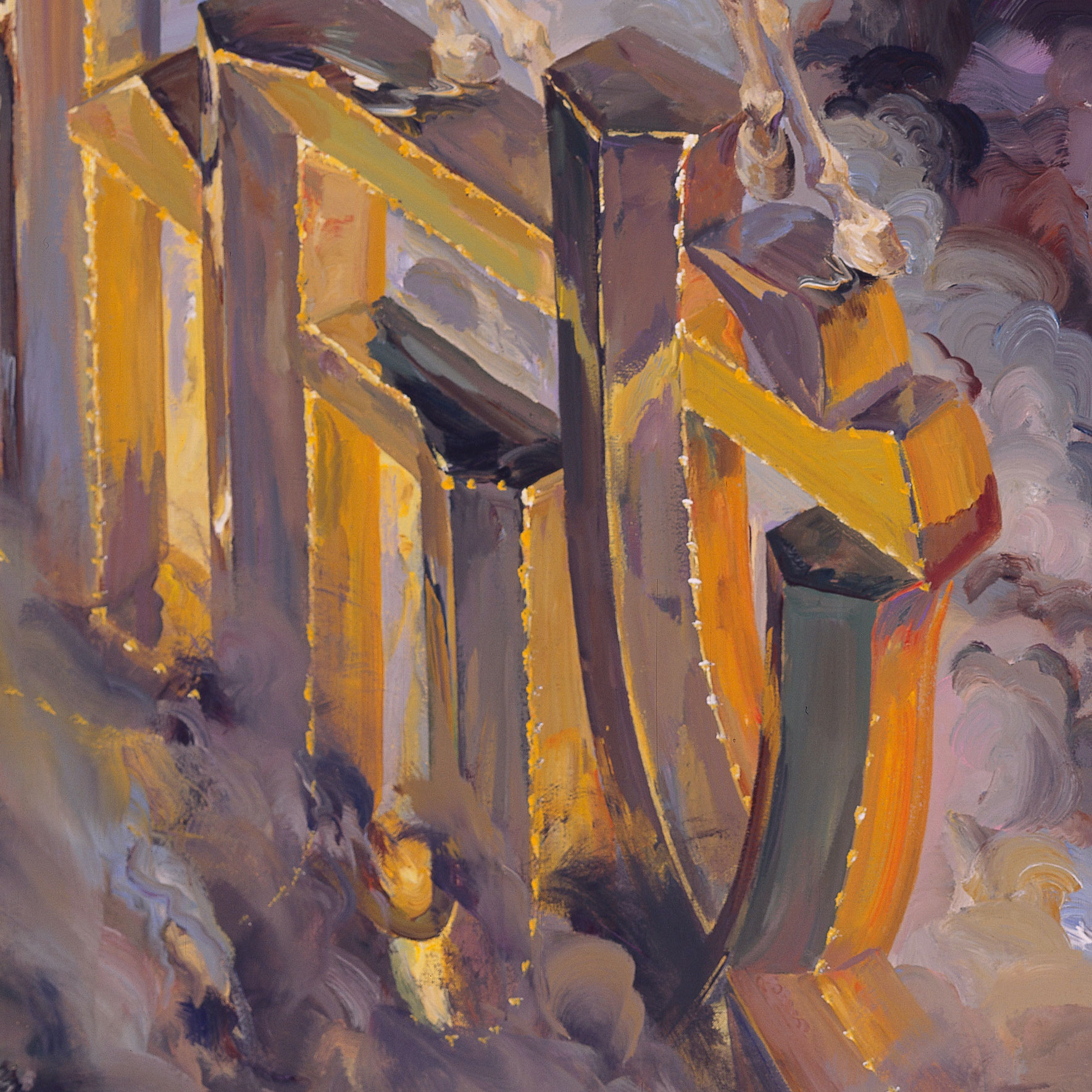
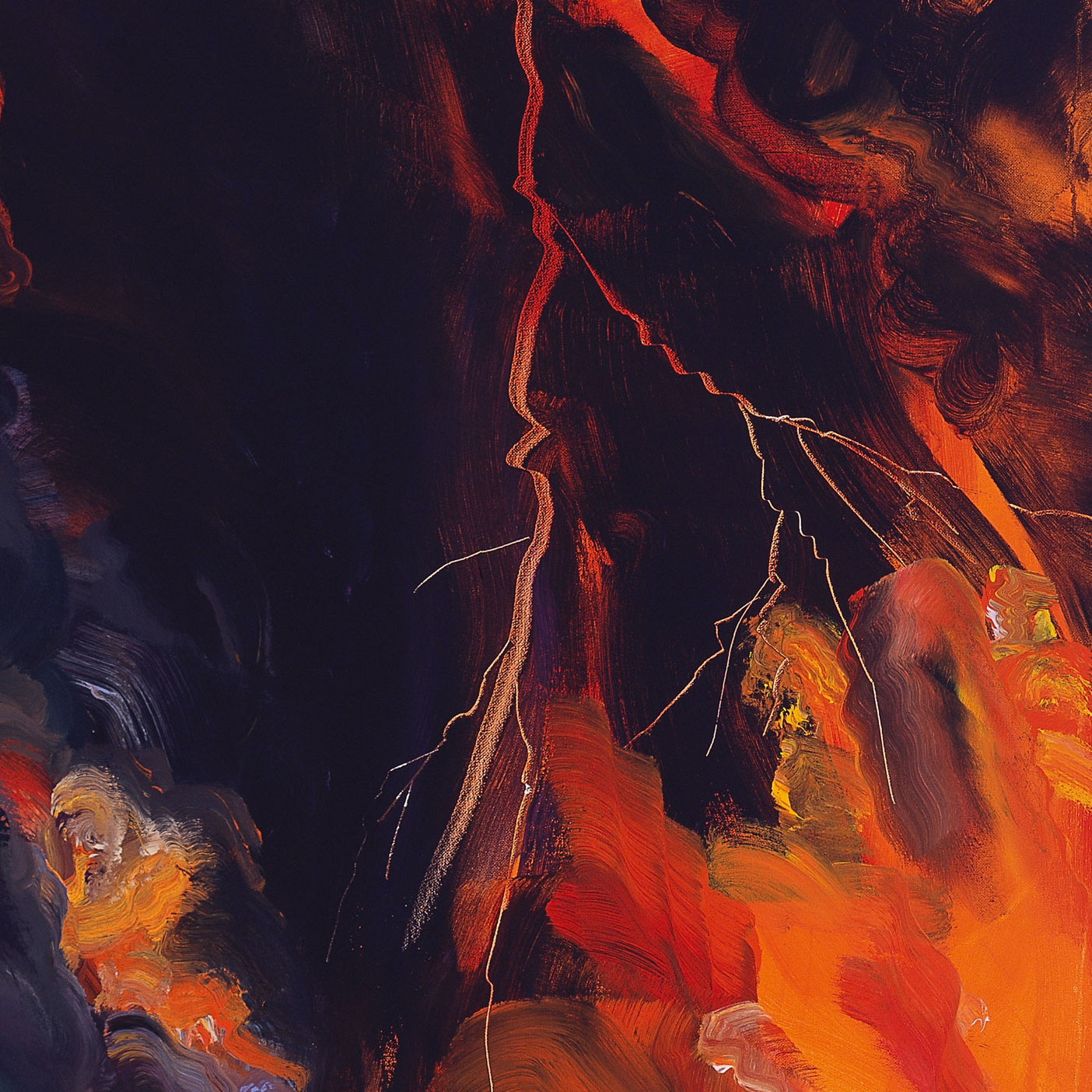
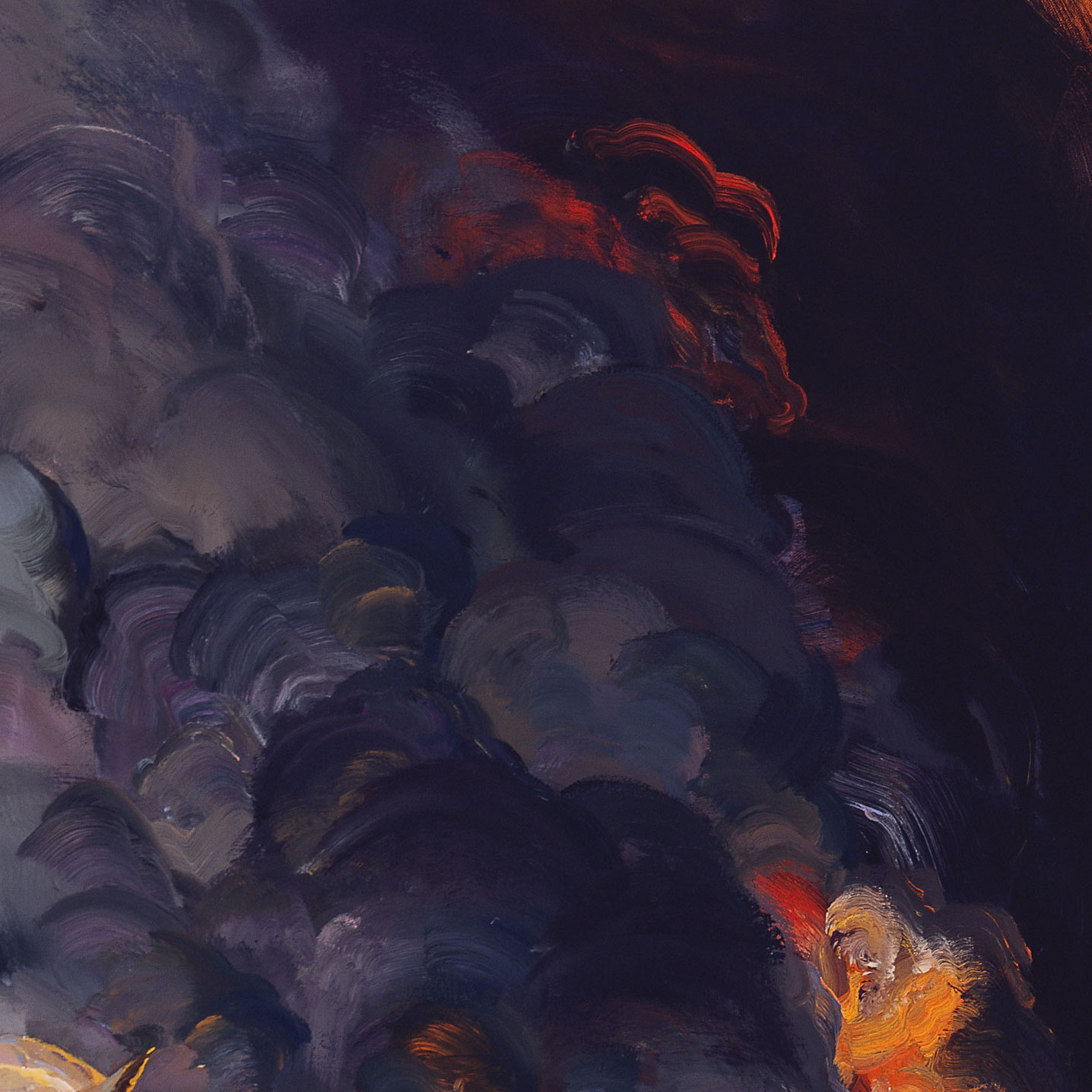

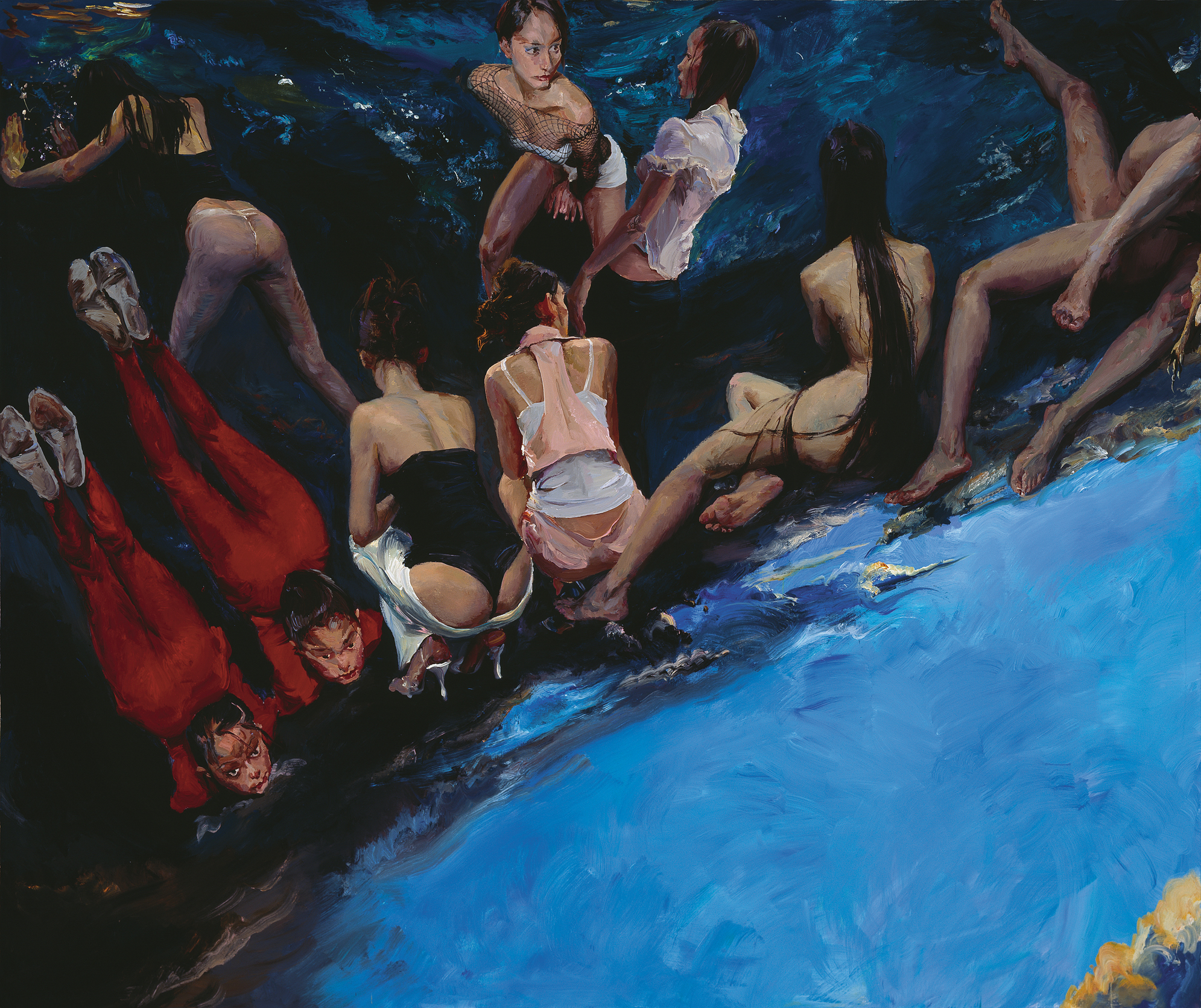
-布上丙烯-2014-250x300cmx3.jpg)
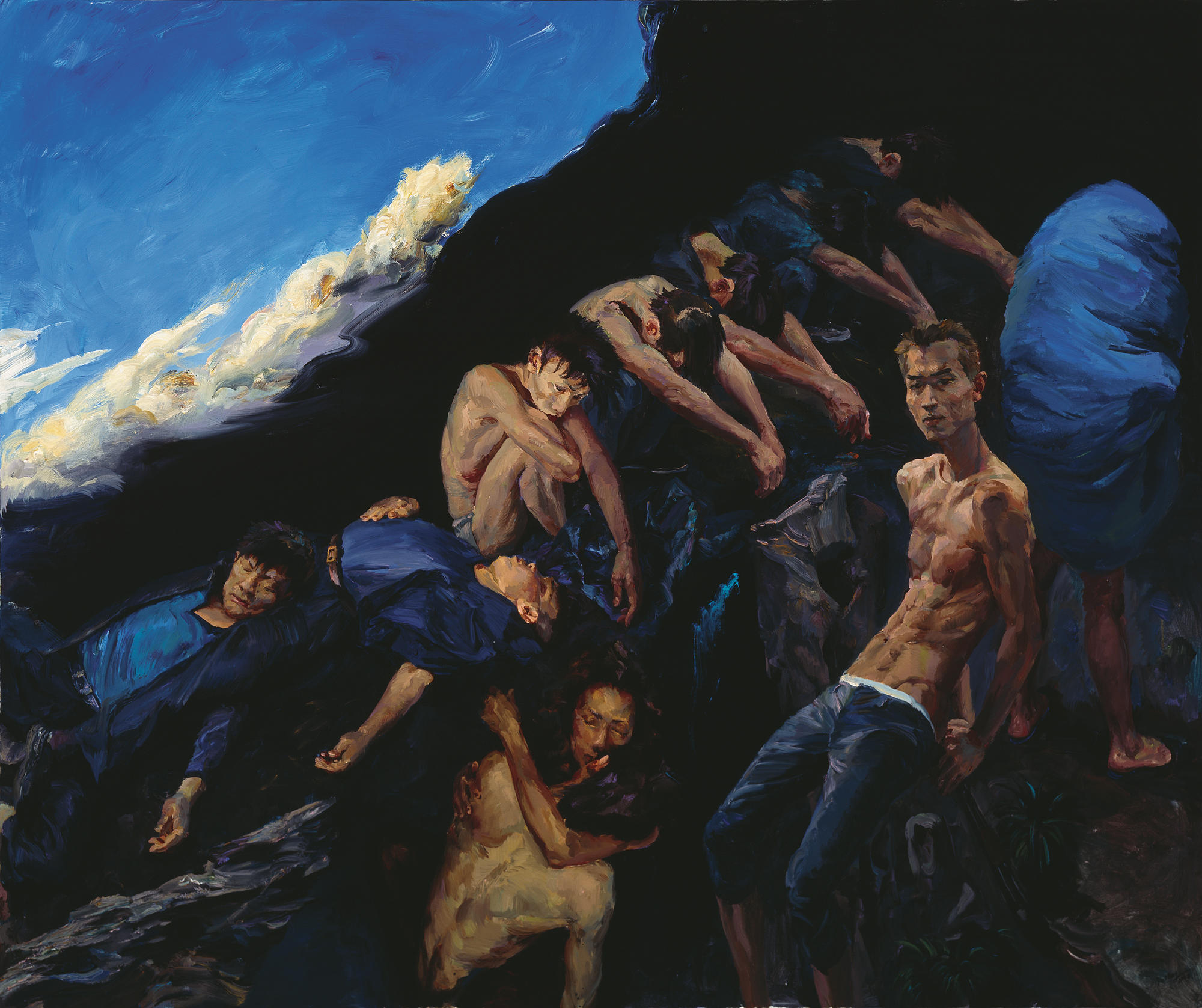
-布上丙烯-2014-250x300cmx3.jpg)
-布上丙烯-2014-250x300cmx3.jpg)
-布上丙烯-2014-250x300cmx3.jpg)
